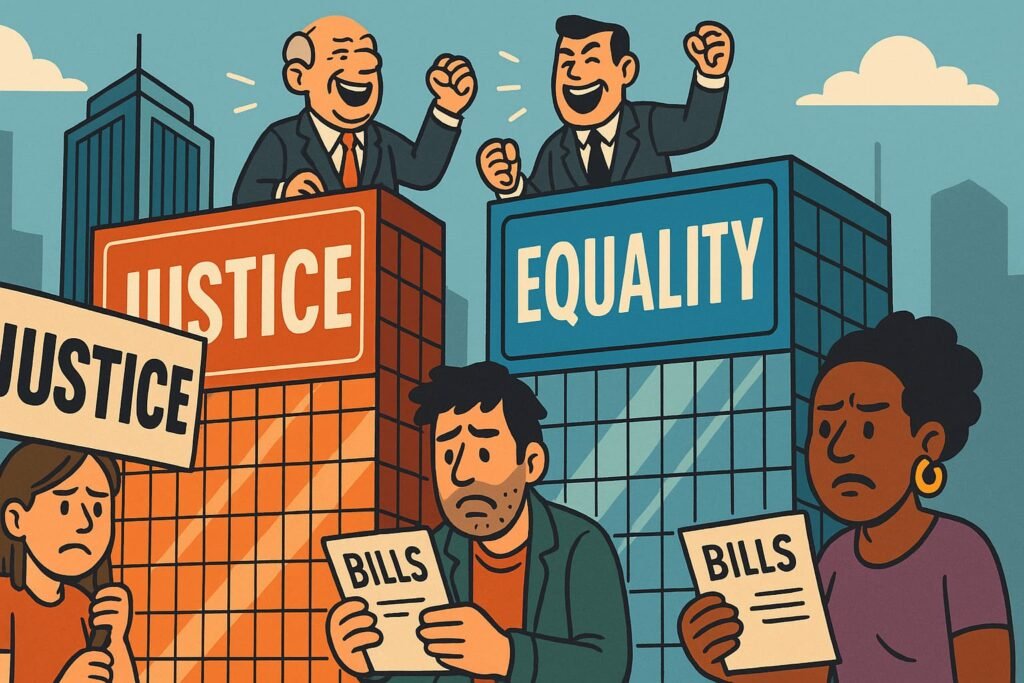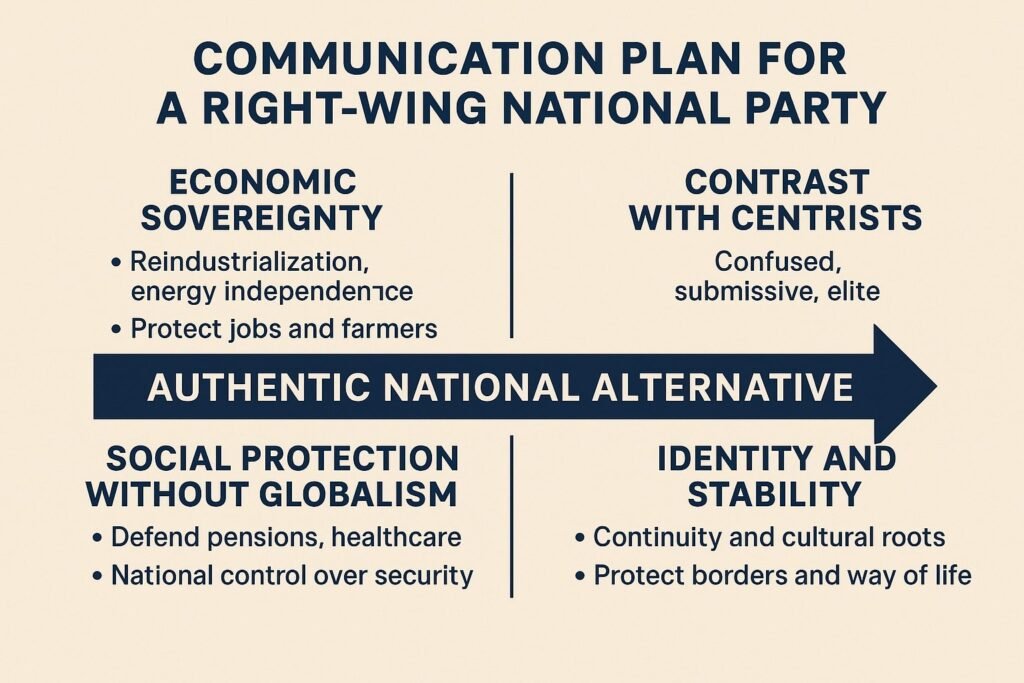Social Justice – From Fairness to Slogans
At its core, social justice once meant fairness: making sure everyone had equal rights, opportunities, and dignity. Over time, though, the meaning shifted. Today, SJ has become a catch-all slogan, stretched to cover everything from campus protests to corporate PR campaigns.
What started as a moral ideal is now a political tool. SJ can still highlight real problems, but in practice, it often divides more than it unites — and provides cover for those in power.
Table of contents
What Is Social Justice Supposed to Be?
On paper, social justice is simple: the belief that society should be fair, and that discrimination and inequality should be addressed. That includes:
- Equal access to education, healthcare, and jobs.
- Protecting vulnerable groups from discrimination.
- Promoting fairness in law and governance.
These are worthy goals. But the way SJ is used today often drifts far from that core.
From Movement to Industry
Social justice began as grassroots activism. Civil rights campaigns, feminist movements, and anti-discrimination laws all drew from the idea. But once institutions and corporations embraced the language, it turned into an industry.
- Universities expanded departments around “social justice studies.”
- Corporations adopted the slogan to polish their brands.
- Governments used it as shorthand for policy, often without delivering real change.
The result? More workshops, more hashtags, more slogans — but not necessarily more fairness.
The Problem of Identity Over Class
Social justice movements originally fought economic inequality. But under the influence of identity politics, the focus shifted from class to categories. Race, gender, and sexuality became the dominant themes, while questions about wealth, jobs, and housing slipped into the background.
For elites, this was perfect. Debates about identity distract from debates about money.
The Weaponisation of Social Justice
Like Critical Theory and Postmodernism, social justice language became easy to weaponise. Disagree with a policy? You’re “against justice.” Question a campaign? You’re branded regressive.
Instead of building solidarity, the term is now used to shut down debate. What was once about inclusion has become exclusionary.
Who Benefits?
- Corporations, who use social justice slogans to look progressive while dodging tough reforms.
- Politicians, who wrap themselves in the language without fixing systemic inequality.
- Media, who profit from outrage and cultural conflict.
The people SJ was supposed to help? Too often left with the same problems, just wrapped in new packaging.
Buzzwords of Social Justice
Like every movement-turned-industry, social justice comes with its own coded vocabulary:
- “Equity” – fairness redefined as managed outcomes, not equal rules.
- “Marginalised voices” – a hierarchy of who gets to speak.
- “Anti-racist” – not just opposing racism, but endorsing the right ideology.
- “Allyship” – public displays of loyalty, often performative.
- “Inclusive policies” – rules that claim to welcome all, but often silence dissent.
These buzzwords make simple ideas sound profound — and turn fairness into a jargon-heavy industry.
Conclusion
Social justice began as a fight for fairness. But in today’s politics and business, it often works as a branding exercise — a way to look virtuous while avoiding harder questions about wealth and power.
The idea of fairness still matters. The problem arises when SJ shifts from a focus on justice to being about slogans.
FAQ Section
What is social justice?
It’s the belief that society should be fair, giving equal rights and opportunities to all.
Why is social justice controversial today?
Because it often prioritises slogans and identity battles over tackling deeper economic inequality.
How has social justice changed over time?
It moved from grassroots activism to a political and corporate branding tool.
Who benefits from social justice language?
Corporations, politicians, and media — not always the people facing inequality.



